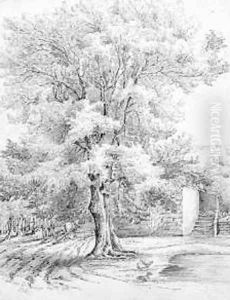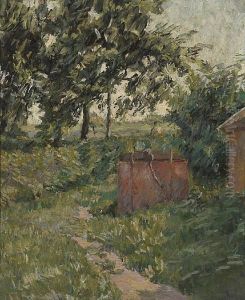Lucy Angeline Bacon Paintings
Lucy Angeline Bacon was a significant figure in American art, notable for her contributions as one of the few female exponents of the French Impressionist movement in California. Born in Pitcairn, New York, in 1857, Bacon's journey into the realms of art took a somewhat circuitous route. Initially, she embarked on a career in teaching after completing her education, a common path for women of her time. However, her passion for art, which had been evident from an early age, eventually led her to pursue a more creative and fulfilling path.
Bacon's artistic ambitions took a decisive turn when she moved to San Francisco in the late 1880s. It was here that she became deeply involved in the local art scene, eventually deciding to further her studies in Paris, the epicenter of the Impressionist movement. In Paris, she had the rare opportunity to study under Camille Pissarro, a pivotal figure in Impressionism. Pissarro's influence on Bacon was profound, shaping her technique, her approach to light and color, and her choice of subject matter, which often focused on landscapes, floral arrangements, and domestic scenes imbued with a soft, luminous quality characteristic of Impressionist works.
Upon returning to California, Bacon continued to develop her unique style, becoming an important proponent of Impressionism in the region. Her work was well-received, with exhibitions at prestigious venues such as the San Francisco Art Association and the Paris Salon, earning her critical acclaim. Despite her success, Bacon's career was relatively short-lived. By the early 1900s, she had ceased to paint, possibly due to personal reasons or the changing tastes in the art world. After her marriage, she dedicated herself to religious and charitable work, gradually fading from the art scene.
Lucy Angeline Bacon's death in 1932 marked the end of a life that, despite its relative obscurity today, contributed significantly to the tapestry of American Impressionism. Her work, characterized by its delicate play of light and vibrant palette, offers a glimpse into the world of a talented artist who navigated the challenges of pursuing a professional artistic career as a woman in the late 19th and early 20th centuries. While her oeuvre may not be as extensive as some of her contemporaries, the quality and beauty of her paintings continue to be appreciated by art historians and collectors alike, ensuring her place in the annals of American art history.

